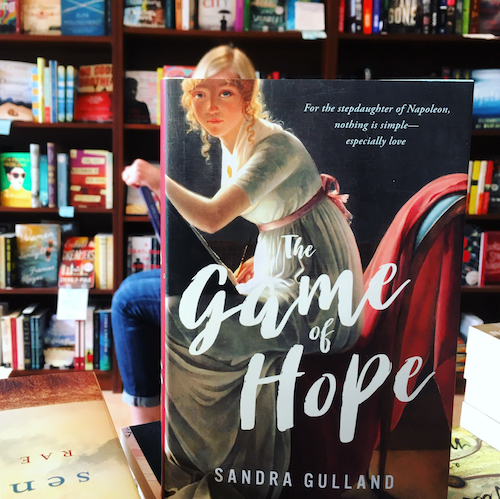
by Sandra Gulland | Jun 6, 2018 | Adventures of a Writing Life, The Game of Hope, Young Adult Literature |
I’ve been on the road, first launching and promoting The Game of Hope in Toronto, then a long drive home to unpack, regroup, and repack before heading to Montreal for the wonderful first (of many, we hope) Montreal YA fest.
It has been fantastic. At the Penguin launch in Toronto, an older woman leaned in to whisper confidentially, “You’re my favorite writer.” Such confessions are sweet. At an interview following (I don’t yet feel I should mention names), the interviewer told me that she loved The Game of Hope and went on to read every one of my other novels. That made me speechless.
That isn’t to say that everyone loves The Game of Hope — there have been some readers who do not — but overall, I’ve been very, very pleased.
The Game of Hope cards
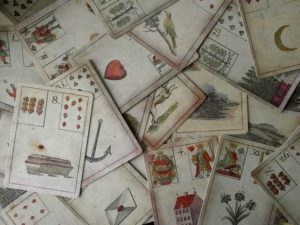
At the Penguin launch, I had each person who lined up to have their free book signed draw a card from a deck of fortune-telling cards of “The Game of Hope” (to keep as a bookmark), and read its meaning in a tiny guide. The expressions of recognition were wonderful to see: one young woman would be getting married, another would get a promotion. Both were quite pleased. Readers love it! Of course I did not include cards that might have a negative connotation in the deck.
It was a special treat to have my step-granddaughter, 11-year-old Ellie and her mother Cara present. Ellie is reading The Game of Hope and offered shyly to a group, “And it’s really good!”
The Montreal YA Fest: such a blast!

My experience at the Montreal YA Fest was amazing, but in an entirely different way. I only sold one book (!), but I met over twenty wonderful YA authors. I’m accustomed to writers of adult fiction; let me tell you, writers of YA fiction are a different breed altogether. They are loud and rambunctious, delightful! I couldn’t buy their books at the festival unfortunately — recent back problems have forced me to be very careful about luggage weight — but as soon as I got home I put in the orders, and they are starting to arrive in waves.
Two wonderful YA novels
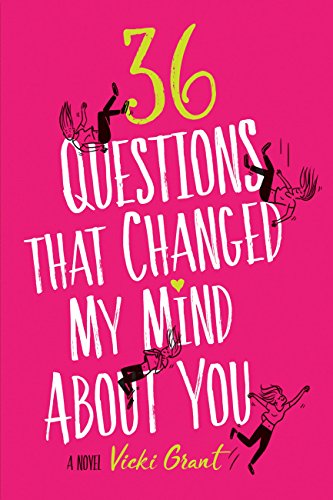
Already I’ve read one absolutely wonderful YA novel: 32 Questions that Changed My Mind About You by Vicki Grant. Don’t you just love a novel that compels you to stay up way too late? That makes you teary and full-hearted? This was such a one. Witty and real, I adored it.
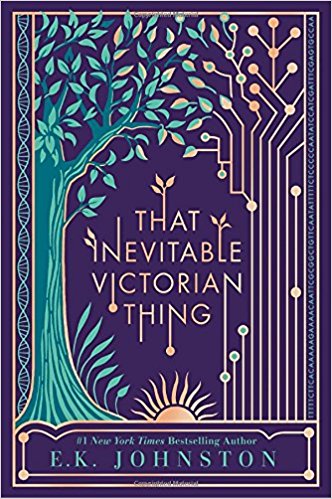
Now I’m reading E. K. Johnstons’s novel That Inevitable Victorian Thing, a futuristic novel set in the past. (Figure that one out.) I.e. Victorian corsets with technological sensors that ease up as needed. It’s delightful, and when I’m not reading it, I’m thinking about it and can’t wait to get back to it.
The wild and wonderful YA world
In general, this immersion into the wider world of YA has been like an explosion of creative imagination for me; in a YA novel, anything is possible.
The YA Fest was extremely well-organized, with many panels for participants to choose from, great food to eat, a fun photo booth (which I’m sorry I missed out on), as well as a button-making table. Here are mine:
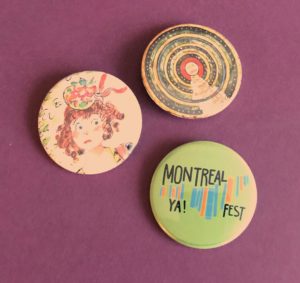
How cool is that? I especially love the dismayed look on the face of Little Bo Peep. Moi.

The photo at the top is from A Novel Spot bookstore in Entobicoke, Ontario. Don’t you just love it? Indie bookstores are so great. The mystery woman is Katie Middleton, the bookstore’s owner. Her hair matches perfectly!

by Sandra Gulland | May 21, 2018 | Adventures of a Writing Life, Audible Editions, Promotion, The Game of Hope, Young Adult Literature |
I’m writing this in Toronto, a long way from home. Tomorrow I have a full schedule of two interviews, a book store signing, and then, in the evening, a book launch of The Game of Hope.
I sent off the final corrections to The Game of Hope last October, and since then I’ve been researching and outlining my next YA novel about a young falconer in Elizabethan England. There are no raptors in The Game of Hope, so I thought it time to reacquaint myself fully with Hortense’s world before having to answer questions about it.
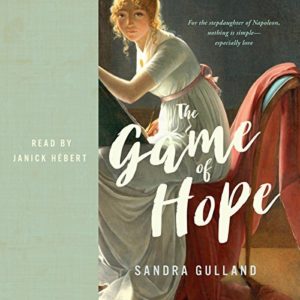
Fortunately, I was able to download the audio edition of The Game of Hope this morning, and on the long drive down to Toronto today, I listened to it. And was charmed! Say hey! I think it’s quite a good story, and the narration by Janick Hebert is simply delightful.
Canadians can now get the audio edition of The Game of Hope on Audible, Kobo, Google Play or on Overdrive through your public library. On June 23, it will be available in the US.
I sincerely recommend it!
Anyone else out there still warmed by the glow of Harry and Megan? I have been!
This is my favorite photo of the pair in the open carriage. (It was snapped by Yui Mok, a photographer based in the UK, as their carriage went under an overpass.)

I initially intended to write this blog about an interesting article about writing historical fiction. However, “The Tourist, the Expat and the Native: A Traveler’s Approach to Crafting Historical Fiction,” by Mary Volmer deserves more than a passing reference. More on that anon…
For now, Hortense is about to meet the man she loves, and — frankly! — I’m curious to hear what happens!
Toronto photo by Sidra Saeed on Unsplash.
SaveSave
SaveSave
SaveSave
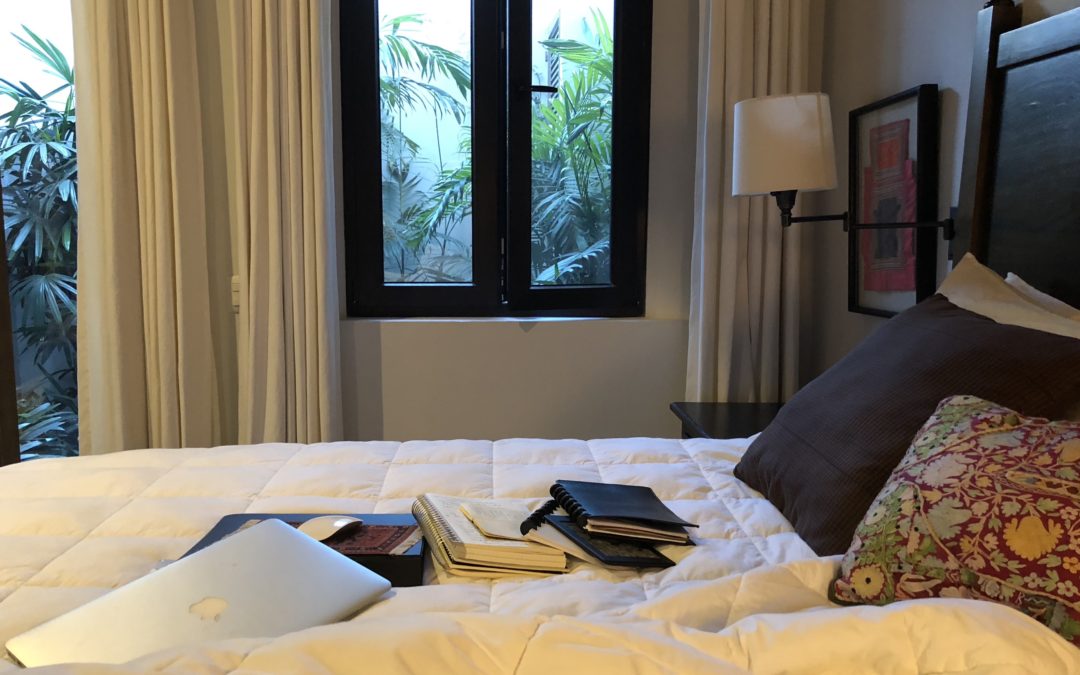
by Sandra Gulland | Mar 20, 2018 | Adventures of a Writing Life, Promotion, The Game of Hope, Work in Process (WIP) |
I’ve been bed-bound for over a week since a minor knee operation to repair a meniscus issue. I’m not going to whine about it! In fact, I’ve discovered that I’m the perfect candidate for this type of life.
On the bed beside me are:
- my Mac Air;
- my Levenger notebook (calendar etc.);
- a Circa notebook fat with my To Do lists;
- another notebook (a Semikolon Mucho Spiral Notebook for the stationery curious), where I’m thinking through The Next Novel;
- a three-ring binder for scene sheets (@ Story Genius), which I’m really using as a support for my mouse pad and mouse);
- my Kindle;
- an iPad;
- and a stack of magazines (The New Yorker, Real Simple, and Bookmarks).
Beside the bed is my walker (required for just a little longer!), a water bottle, clock, and iPhone. Moisturizer, lipstick, post-its, pencil, pen, pills. Snacks, tissue. Basic clutter.
Everything I need, in short, right where I can reach it. The only problem with this rat’s-nest life is that I can’t climb stairs (yet), can’t get up to my office.
But for now, I’m making great use of this time.
Website renovation
With every publication, a writer needs to update his/her website with information about the new book, a new media kit, author events, and a new author portrait throughout.
I didn’t have time to get an author portrait taken this year (I tried a selfie, with poor results), so I’ve used one James Brylowski took of me five years ago.
“Problem is, books are written slowly, and aging happens all of a sudden.” — from a wonderful article: The Agony and the Ecstasy of taking Author Photos.)
Having neglected my website for years, I discovered a number of problems. Fortunately, I was able to find a great website person through Fiverr.com who is helping me. We have quite a bit to do yet.
(Frankly, I don’t know how authors who publish a book a year manage.)
An important part of getting my website more reader-worthy was setting up my Media page. Following the directions of Tim Grahl (see below), I learned to code my Media page so that high-definition images would be automatically downloaded with just a click. I’m fairly stoked that I was able to do this.
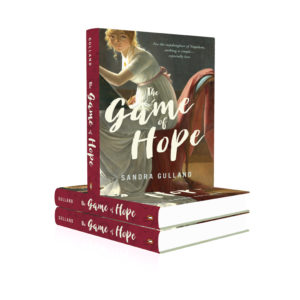
Also, on Fiverr.com, I found someone to turn the book cover of The Game of Hope into a 3D image (see above). For $5!
Easy Outreach with Tim Grahl
When it comes to marketing, I’m a fan of Tim Grahl, He’s experienced, down-to-earth and realistic. I’ve taken a few of his online courses, and they’ve always been worthwhile. Right now I’m following a new one he’s testing out, “Easy Outreach.” Basically, it’s about how to get interviewed on podcasts, but the detailed system he outlines would apply to any outreach: to blogs, vlogs, or podcasts, etc.
An important part of the process is to identify suitable podcasts and to study them before making a pitch. (I’ve discovered a number of wonderful podcasts in the process.) I’m kind of excited about putting this into practice. I ordered a USB Yeti mike, and already have one podcast interview scheduled for the fall.

I’m ready! Who knows where this might lead?
Finally learning Scrivener
I’ve promised myself that I would write The Next Novel on Scrivener. I’ve taken stabs at learning it before, but I’ve always ended up confused and frustrated. It’s a complex programme! I was on the verge of giving up when I came upon a Udemy Scrivener 3 course for Mac. It had excellent reviews so I went for it. It’s been fantastic. I have questions almost every day, and the teacher responds to every one. I take it bit by bit, and immediately apply what I’ve learned, so hopefully it will stick. I’m finally understanding why so many writers love it.
Additionally, I’ve been developing my next novel following the guidelines in Story Genius by Lisa Cron. Puzzling over how to get Cron’s scene card templates into my Scrivener project, I Googled “Story Genius Scrivener” and found a wonderful article by Gwen Hernandez on WriterUnboxed: Using Scrivener with Story Genius. Bingo! She even included a downloadable Scrivener template with scene card templates (and much more).
Watching movies, reading and listening to books and reading magazines …
And then, of course, there have been wonderful movies to watch: Three Billboards Outside Ebbing, Missouri; Call Me by Your Name; and, last night, Lady Bird. All were simply great. Of the three, I found Call Me by Your Name the most enchanting, swooningly European.
And then, of course, books, books, books! In addition to books on writing, I’m reading The Burning Girl by Claire Messud and listening, on Audible, to an amazing performance of The Hate U Give by Angie Thomas.
A hard life, eh?
SaveSave
SaveSave
SaveSave
SaveSave
SaveSave
SaveSave
SaveSave
SaveSave
SaveSave
SaveSave
SaveSave
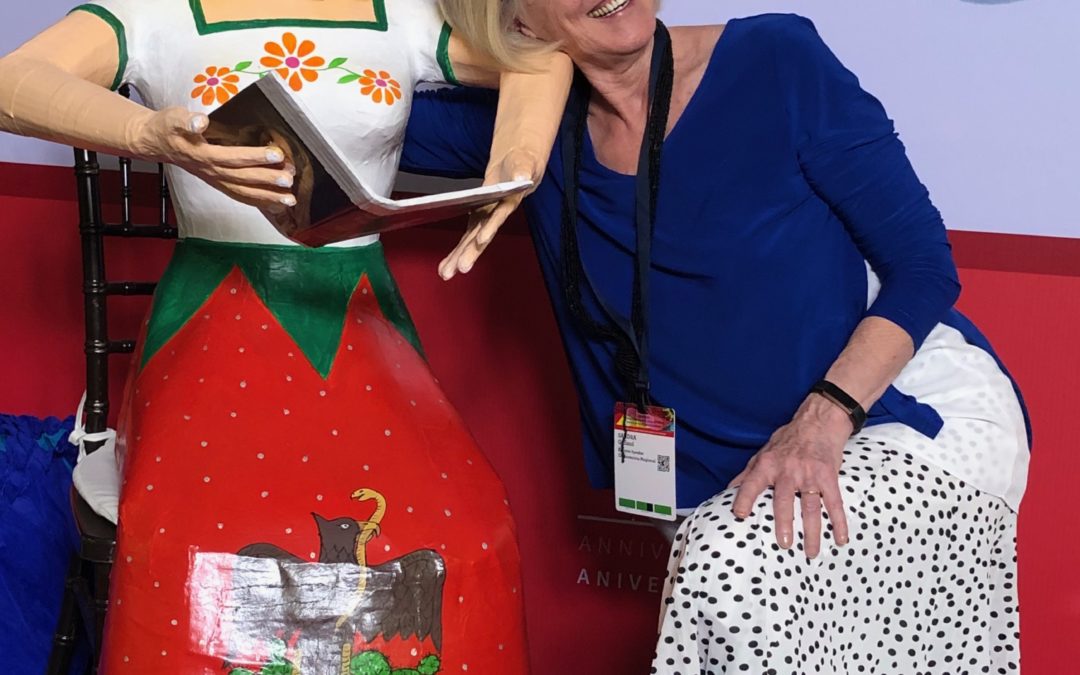
by Sandra Gulland | Jun 30, 2015 | Adventures of a Writing Life |
In one month I’m to give a reading not far from where I live. It’s high time I started preparing. (Did you know that presenters of TED talks prepare for months? For fascinating links on this process: go here.)
An author reading is not a reading: it’s a talk
The first thing to understand about preparing to give a reading is that it should not really be a “reading” at all — it’s best if it’s an engaging talk, with a mere sprinkling of readings thrown in.
Who is in the audience?
Every author needs to be prepared for an audience of 1 or 100. For my event coming up, it’s likely to be a good-sized crowd. A number of those attending will be friends and family.
This raises the bar!
I have given a number of talks in my area over the decades. I want it to go over well, and I don’t want to repeat myself.
That bar just went up several more notches.
Review print-outs and videos of past author readings
I’ve begun preparing for the talk coming up by digging out my earlier speeches. In the process, I discovered a video of a talk I gave about seven years ago. I had just finished a US tour for Mistress of the Sun, and speaking before a crowd daily for weeks on end was great preparation. I also had the advantage of a friend/filmmaker to film this talk, so the recording is without the usual wiggles and jumps.
Decide what to wear
This is a surprisingly important question. At an author reading, people sit and look at you for an hour. I’ve learned not to wear jewelry that can jangle against a mike. Bright is good. Comfortable is great. Fashionable and hip would be nice. Presenting in costume is guaranteed to be a hit.
I often present in historical dress. It’s fun, and everyone enjoys it. However, for me, a question is: Should I wear the same costume I wore the last time I gave a reading at this festival? I think not. A number of people attending will have been at the last one.
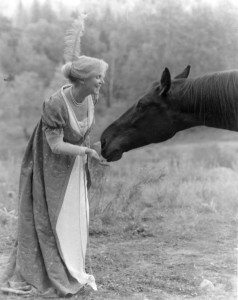
{The photo of me and my horse was taken by Barney McCaffrey.}
I could wear my Josephine gown, which would be relevant to the novel I’m writing now … but not relevant to The Shadow Queen, my latest publication.
Alas, I’m afraid that I should go simply as myself. To tell the truth, I find this somewhat intimidating. It means that content of the talk itself is going to have to be excellent.
Next up: On writing and outlining an author talk. Visuals or not? Give-aways or not?
I’ll keep you posted.
Links of interest
Weekly I’ve started posting links to things I find of interest on the Net. I’m calling it a Sundae of Sundries (posted every Sunday, of course). Let me know if there are any articles or blogs you’d like to share.
The Facts of Life (& Other Mysteries)
I continue to work and rework the WIP, which I’m now calling The Facts of Life (& Other Mysteries). What do you think of that title?
Revision is such slow work. One must be patient and have faith in the process. The work invariably feels broken at this stage.
I was heartened to see this page of revision made by Orwell for 1984. My own pages look similar.
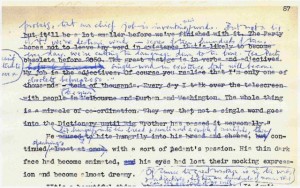
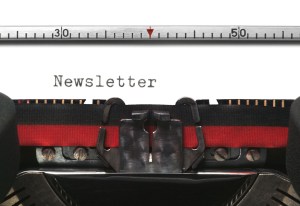
by Sandra Gulland | Apr 6, 2015 | Adventures of a Writing Life, Promotion, Resources for Writers |
The importance of the author newsletter
In my decades as a published author, I’ve learned a few things about the author newsletter.
First: it is the single most important thing you can do to reach out to your readers. Experts on book marketing say that an author’s newsletter is more effective than any amount of social media (although social media certainly helps).
Fortunately, sending out a newsletter is also one of the easiest things an author can do.
Research by subscribing to author newsletters
Subscribe to author newsletters in order to learn about all the various styles. In this way you will see what engages interest — and what does not.
You can see my latest newsletter here. (Of course, I wouldn’t be professional if I didn’t point out that you can sign up for it here.)
Sign up for an email newsletter service
Decades ago, I started out with a simple email sent to family and friends. I quickly learned that there was a limit to how many emails my computer mail program was willing to handle.
That’s when I discovered the need for an email service. (I use GroovySoup, but many authors use MailChimp.) For a reasonable fee, an email service will provide you with a newsletter template, maintain your email database, and give you statistics (how many opened your newsletter, for example, and which links were the most popular).
You can have a standard template customized. I have the header of my newsletter reflect my website:

Feed your email newsletter database
Most everything you do as a writer should be with an eye to gathering email addresses to add to your newsletter mailing database. If you give a reading: pass around a newsletter sign-up form. On your website and blog, be sure to have a sign-up link. This database is gold: these are your core followers.
Offer value
Some author newsletters are formal. Mine is more chatty. I like to imagine that I’m writing to my closest friends and family, so that the tone of my newsletter is close and familiar. Decide what tone is best for you.
I feel it’s important to give nuggets of news: the newsletter shouldn’t be too long, and it should be easy to skim. The headlines, too, should attract interest.
Write about a variety of things: your research, your work, your travels — your news — but also include things that will be of interest to your readers: books you’ve enjoyed reading or a writing tip, for example.
Give things away. With each of my newsletters, a subscriber wins a copy of one of my books.
I revise my newsletter several times over, and before I send it out I have a few people read it and make suggestions. Because it is hard to see one’s own mistakes, I have an editor look at it for errors. This is money well spent.
Use visuals
There should always be visuals in a newsletter. I use Google image search and my own photos. Be sure that the images you use are in the public domain. Wikipedia images are available for use, as a rule. Canva is a site for creating your own custom designs.
Give thought to the subject header
The subject header in your newsletter is very important. Imagine all the email people get. The subject header is what will make someone decide whether or not to open your newsletter. Make it interesting.
How often should you send out a newsletter?
Some authors send out a newsletter once a week, others once a month. I aim to have a newsletter out every three months. I think once a month is considered the most effective.
Do you send out an author newsletter? If so, please link to it in the comment section below. I’d love to see it. What has worked best for you?






![]()












